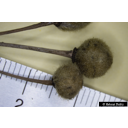Useful information about the taxon (species, subspecies, variety...)
Tilia platyphyllos Scop. 1771
Malvaceae (APG IV)
large-leaved lime
Taxon concept: The Plant List (2010)
Tilia platyphyllos Scop. - Accepted: Tilia platyphyllos Scop. bei Zander 2008; Familie: Tiliaceae (Zander 2008)
Tilia platyphyllos Scop. - Accepted: Tilia platyphyllos Scop. bei The Plant List (2010); Familie: Malvaceae (APG III)
Tilia platyphyllos Scop. - Accepted: Tilia platyphyllos Scop. bei The Plant List (2014), version 1.1; Familie: Malvaceae (APG III)
Tilia platyphyllos Scop. - Accepted: Tilia platyphyllos Scop. bei The Plant List (2014), version 1.1; Familie: Malvaceae (APG IV)
Tilia platyphyllos Scop. - Accepted: Tilia platyphyllos Scop. bei Schmeil-Fitschen 2019; Familie: Malvaceae (APG IV)
Tilia platyphyllos Scop. - Accepted: Tilia platyphyllos Scop. bei BfN Checklist Flora DE; Familie: Malvaceae (APG IV)
Tilia platyphyllos Scop. - Accepted: Tilia platyphyllos Scop. bei World Flora Online - APG IV (Angiosperms); Familie: Malvaceae (World Flora Online - APG IV (Angiosperms))
Tilia platyphyllos Scop. - Accepted: Tilia platyphyllos Scop. bei The Plant List (2010); Familie: Malvaceae (APG III)
Tilia platyphyllos Scop. - Accepted: Tilia platyphyllos Scop. bei The Plant List (2014), version 1.1; Familie: Malvaceae (APG III)
Tilia platyphyllos Scop. - Accepted: Tilia platyphyllos Scop. bei The Plant List (2014), version 1.1; Familie: Malvaceae (APG IV)
Tilia platyphyllos Scop. - Accepted: Tilia platyphyllos Scop. bei Schmeil-Fitschen 2019; Familie: Malvaceae (APG IV)
Tilia platyphyllos Scop. - Accepted: Tilia platyphyllos Scop. bei BfN Checklist Flora DE; Familie: Malvaceae (APG IV)
Tilia platyphyllos Scop. - Accepted: Tilia platyphyllos Scop. bei World Flora Online - APG IV (Angiosperms); Familie: Malvaceae (World Flora Online - APG IV (Angiosperms))
- Color of flower
- cream green
- Flowers
- hermaphrodite flowers; in 2-5-flowered inflorescences
- Flower ecology
- insect-pollinated (honeybees)
- Life form
- woody, tree
- Foliage persistence
- deciduous
- Fruit ecology
- wind-dispersed (anemochorous)
- Soil conditions
- preferentially on fresh, percolating, nutrient-rich and alkaline, moderately acid, humus-rich, loose, medium to deep, often moved, stony loam soils (mull soils)
- Light conditions
- partial to full shade plant
- Root type
- topsoil and deep-rooted
- Succession type
- soil stabiliser
- Natural occurrence (habitat)
- thermophilous mixed forests, ravine forests and noble hardwood forests, elm-maple-ash forests, montane forests, beech-lime forests, cliff ledges; at winter-mild and humid climate sites; in medium elevations of highlands; in the Alps up to 1,000 m
- Vegetation typ and synecology (plant community)
- temperate, mixed mesophytic deciduous forests; characteristic species of the Tilio-Acerion community, also in the Fagion
- Natural propagation (all types)
- by stump spreading
- Constraints according soil conditions
- not salt tolerant
- Constraints according habitat
- sensitive to air pollution
- Recommendation (regional context)
- not recommended for urban areas
- Life span
- long-lived (up to 1,000 years old)
- Usage
- as medicinal plant: dried flowers (Flos Tiliae) have sedative, antispasmodic, diaphoretic, hypotensive, emollient, diuretic and mild astringent properties and are medicinally used in the treatment of colds and coughs; as beekeeping plant; also as ornamental tree
Erhardt, W., Götz, E., Bödeker, N. & Seybold, S. (2008): Der große Zander. Enzyklopädie der Pflanzennamen. Band 2. Arten und Sorten. Eugen Ulmer KG, Stuttgart (Hohenheim), 18. Aufl., 2103 S.;
Haider, M. et al. (2005): Wildbienenkataster. See: https://www.wildbienen-kataster.de;
Maurizio, Anna et al. (1982): Nektar und Pollen - die wichtigsten Nahrungsquellen der Honigbiene. 4. Ehrenwirth, München, 3, überabeitete Auflage;
Pritsch, Günter et al. (1985): Bienenweide.. Neumann-Neudamm, Melsungen;
Pritsch, Günter et al. (2007): 200 Trachtpflanzen erkennen und bewerten.. Kosmos, Stuttgart;
Schick, B. & Spürgin, A. (1997): Die Bienenweide. Eugen Ulmer Verlag, Stuttgart, Auflage: 4., völlig neubearb. u. erw. A., 216 S. 978-3800174188.;
The International Plant Names Index (2009). Published on the Internet http://www.ipni.org; Courtesy to IPNI, 2009. Exported from IPNI at date: 2009-09-22 20:17:51;
Westrich, P. et al. (2018): Die Wildbienen Deutschlands.. Ulmer Verlag ISBN 978-8186-0123-2.;
Haider, M. et al. (2005): Wildbienenkataster. See: https://www.wildbienen-kataster.de;
Maurizio, Anna et al. (1982): Nektar und Pollen - die wichtigsten Nahrungsquellen der Honigbiene. 4. Ehrenwirth, München, 3, überabeitete Auflage;
Pritsch, Günter et al. (1985): Bienenweide.. Neumann-Neudamm, Melsungen;
Pritsch, Günter et al. (2007): 200 Trachtpflanzen erkennen und bewerten.. Kosmos, Stuttgart;
Schick, B. & Spürgin, A. (1997): Die Bienenweide. Eugen Ulmer Verlag, Stuttgart, Auflage: 4., völlig neubearb. u. erw. A., 216 S. 978-3800174188.;
The International Plant Names Index (2009). Published on the Internet http://www.ipni.org; Courtesy to IPNI, 2009. Exported from IPNI at date: 2009-09-22 20:17:51;
Westrich, P. et al. (2018): Die Wildbienen Deutschlands.. Ulmer Verlag ISBN 978-8186-0123-2.;
Diese Webseite verwendet Google Maps, um Karten und Standorte von Pflanzen in den Hohenheimer Gärten anzuzeigen. Dadurch werden unter Umständen Daten an Google weitergeleitet, was mit einer Verarbeitung Ihrer personenbezogenen Daten verbunden sein kann.
Die Datenschutzerklärung von Google finden Sie hier:
Datenschutzerklärung von Google
| Sex | Standort | Accession number | Planting year | Donation | IPEN | Lat. | Long. |
|---|
Last update:
Taxonomic update: Helmut Dalitz on: 7.1.2021Update of the description: ; Helmut Dalitz; Matthias Krause; latest by: Matthias Krause on: 4.3.2019
In the list below you will find the geographic coordinates of many woody plants in the garden. In these cases the points are marked in the map.
If no coordinates are listed, the coordinate of the point in the map marks the middle coordinate of the section.






